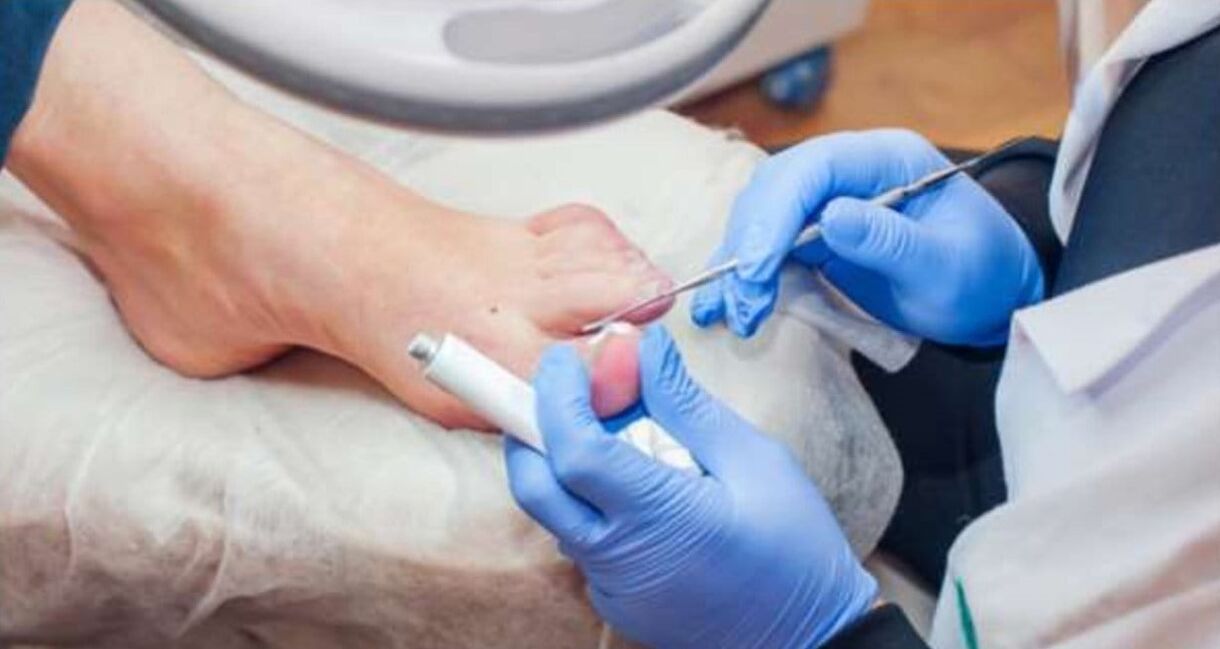Fungal diseases of the nails and feet are prevalent.

cause
Doctors divide fungal diseases of the feet and nails into two groups. The first includes diseases called epidermophytosis, caused by the interdigital Trichophyton fungus, and the second - rubrophytosis, which occurs when the Trichophyton rubrum fungus multiplies. These fungi can affect both the nail plates and the interdigital folds, the heel and the back of the foot.
Factors contributing to fungal infection:
- cracks, scratches on the interdigital folds caused by sweating or dry skin, abrasion, poor drying after water procedures, narrow interdigital spaces, flat feet, wearing tight shoes, etc . ;
- vascular diseases, freezing of limbs, work on the legs, varicose veins, reduced immunity, endocrine diseases, stress;
- Professional factors - work in mining companies, metallurgical and chemical industries. Nail and toenail fungus often affects military personnel and athletes, which is due to the peculiarities of their profession.
The disease can be transmitted through close contact with the patient or through the objects he used. Baths, swimming pools and other public places with high humidity are "dangerous" from the point of view of pollution. There, the mushrooms are created ideal "greenhouse" conditions: heat and humidity. In addition, nail plate, almost entirely composed of keratin, is an excellent breeding ground for fungi.
Once inserted into the nail plate, the fungus grows and multiplies very slowly. Gradually, it melts the nail, taking its place and spreading to the surrounding skin.
What is happening?
With a fungal infection of the skin of the feet, the process often begins with interdigital folds. Cracks and skin form in these places. Later, the skin starts to redden and itching occurs. The process often goes to the back of the foot, the toe, the toe of the toes. Other clinical forms of fungal infection are also possible.
Nail fungus manifests itself as follows:
- Nail color: white, yellow, brown, black. The nail is dull, dark.
- Nail surface: uneven, rough. The nail is crumbling.
- Nail thickness: thickening or thinning / delamination.
- Nail shape: deformed.
- Folding nails: not altered or inflamed.
A significant deformation of the nails and their thickening creates certain difficulties during their cutting. In addition, the pressure of a wrong thick nail in the underlying tissue (nail bed), as well as the pressure of the shoe on the nail, can cause pain in many cases.
Diagnosis and treatment
Diagnosis and treatment of fungal diseases is performed by a dermatologist. The doctor will first send you to do an itch - to determine the type of fungus and prescribe the necessary treatment. Furthermore, certain medications are prescribed based on the general condition of the patient, the presence or absence of other diseases. Therefore, self-medication is ineffective, and can sometimes even worsen the course of the disease.
The main risk of fungal infection of the foot is that the disease will progress all the time. If the fungus is not treated, then, starting with one nail, it will spread to others, and then to areas close to the skin or fingernails. In rare cases, there is also damage to internal organs.
In addition, the causative agents of this disease, being very strong allergens, can rebuild the body’s sensitivity and thus cause different types of allergic reactions.
Many patients prefer to use the widely advertised antifungal varnishes and oils. It should be remembered that antifungal varnishes help only in the early stages of the disease and do not affect the entire thickness of the nail - in many cases, it is necessary to take medication (tablets) inside. In addition, some of the creams work only on the skin, without penetrating the nail. These funds are intended primarily for prevention.
Sometimes people do not go to the doctors for fear of complete removal of the nail plate. This will not happen because the delete method no longer applies. Powerful antifungal drugs are currently used that, when used correctly, completely eliminate the fungus.
In the process of treating a fungal infection and after its completion, it is important to disinfect everything with which the fungus has come in contact. Disinfection should be applied to floors, walls, bathroom inventory, showers, baths, and the patient's personal belongings: linen, shoes, skin and nail care items.
You can reduce the risk of infection with a fungus by following these recommendations:
- use an individual towel;
- wear individual underwear;
- take a shower by the pool;
- do not wear slippers when visiting;
- do not try barefoot shoes in the store.
























